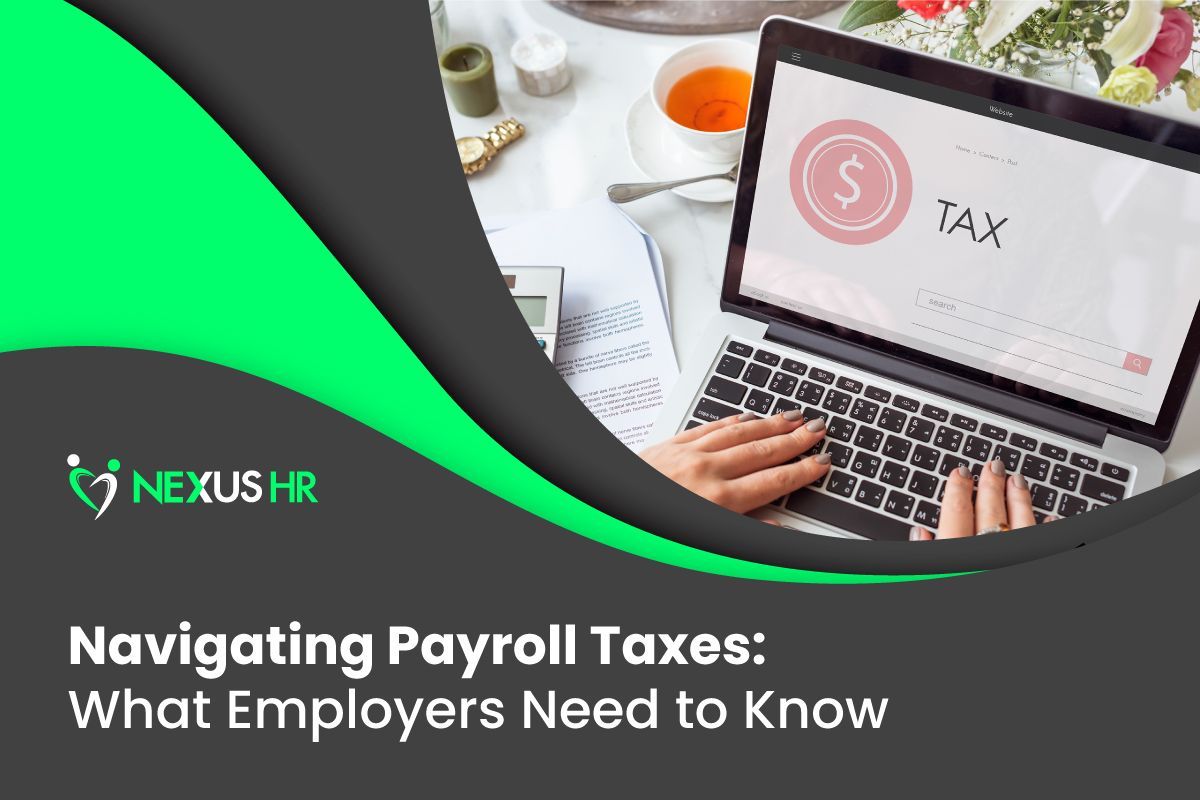Get in touch
877-922-5867
Info@Nexushr.com
877-922-5867
Top 10 Tips for Terminating an Employee
The decision to terminate an employee is always challenging. It's a serious and emotionally charged process that requires careful planning, clear communication, and the utmost respect for everyone involved.
Whether you’re terminating an employee for the first time or looking for ways to do it better, this blog post will give you helpful tips on navigating the complexities of employee termination.
Reasons for Terminating an Employee

Before discussing how a company leader can properly terminate an employee, you first need to tackle the question: Why do you terminate an employee?
If you’re planning to fire an employee, you need to have a specific reason for doing so, and your motivation must comply with state and federal laws. Most U.S. states are
at-will
employment states, which means both the employer and employee are generally free to end their employment relationship at any time, with or without cause or prior notice. However, there are exceptions.
The state of California, for example, is an
at-will state. However, when you fire an employee for illegal reasons, they could file a wrongful termination claim against you. Here are certain exceptions to at-will employment in California:
Public Policy.
This exception protects employees from being fired for reasons that violate public policy, like terminating the employee because they refuse to engage in illegal activity or report unsafe work conditions.
Implied Contract.
This exception protects at-will employees who do not have an employment contract but were led to believe by their company that they enjoy protection from termination.
Discrimination and Retaliation.
Employers cannot fire at-will employees based on protected characteristics such as age, race, religion, sex, sexual orientation, pregnancy, national origin, marital status, disability, etc.
Public sector employees, union workers, and employees with contracts that specify the need for good cause for termination also enjoy protections from at-will employment laws in California.
Employment laws are complex, and implementing them in your business is challenging. If you have any questions about your business’s contracts, documents, and employment decisions, it would be best to seek guidance from a reputable legal consulting firm.
Tips for Terminating an Employee

Standard operating procedures (SOPs) are critical to an efficient workplace. Just like how your business has an effective recruiting process, you also need to have an SOP to follow when offboarding employees. Here are a few things to consider when handling employee terminations:
Before Terminating an Employee
1. Give them the opportunity to improve.
Because recruiting, hiring, and training new employees can be costly, it makes sense to put in a little extra effort to see if underperforming employees can get better at what they do.
Provide honest feedback and schedule regular coaching sessions with your employee to review and appraise their performance. You can even develop a performance improvement plan together to address problem areas and set goals.
Read More:
Questions to Ask in a Performance Review
2. Document, document, document.
According to talent management expert Aaron Ziff, “Without proper documentation of company rules, position requirements [and] expectations, infractions, and disciplinary policies, you will lose most lawsuits.”
Documentation is necessary to support most employment decisions, including employment termination. Make sure you record your employees’ employment events, such as coaching sessions, performance evaluations, positive contributions, policy violations, etc.
3. Schedule a face-to-face meeting.
Letting an employee go over a phone call or email may be tempting. However, it’s crucial to give your staff the courtesy of a face-to-face meeting to discuss their termination.
Schedule the termination meeting with your member toward the end of the workday so that the office is quieter and more private and other coworkers have left for the day.
Holding a face-to-face termination meeting may not be possible if you're letting go of a remote employee. Your next best option is a video conference call. Compared to phone calls and emails, meeting via video call allows you to deliver tough news more empathetically. You’ll also be able to see and read the employee’s body language and facial expressions.
Read More:
Tips for Managing Remote Employees
Having the Conversation with the Employee
4. Have an HR representative attend the meeting.
Firing an employee is a highly sensitive situation, and things can get very emotional quickly. It would be wise to have someone from your Human Resources (HR) department attend the meeting or video call with you to support you during the process and to serve as a witness to the event.
If you don’t have an HR department, partnering with
a full-service HR company can help you get complex tasks like employee terminations done effectively and efficiently.
5. Be direct.
Skip the small talk and go straight to the point. Employment termination is a serious matter, and beating around the bush can make the situation more stressful than it already is.
Of course, being direct doesn’t mean being tactless. Make sure to think before you speak. Don’t go into the meeting without a script or an outline of what you plan to say.

6. Be clear that the decision is final.
Some employees may not believe you when you tell them they’re fired, especially when they don’t think they deserve to be. If the decision to terminate employment is final, don’t give the employee any reason to think otherwise.
During the conversation, tell the employee the reason for termination and when it takes effect. You can also discuss pay, benefits, unused vacation time, etc.
7. Allow them to ask questions.
Your employee has the right to ask questions regarding the termination; allow them to do so. You can prepare a brief and honest answer ahead of time to avoid getting caught off-guard and dragging the meeting on further.
The termination meeting also serves as the employee’s exit interview, so you can use the conversation as an opportunity to ask them for their feedback on management—positive and negative.
Read More:
How to Respond to Negative Employee Reviews
8. Thank them for their contributions.
Wrap up the conversation graciously and on a positive note by thanking your employee for their valuable contributions to the company. Show them you respect them even though you had to let them go.
End the meeting with a firm handshake and encouraging words.
Read More:
How to Perform an Exit Interview Properly
After Speaking with the Employee
9. Revoke access to company resources and facilities.
If your company has a solid employment termination process in place, this step is typically arranged ahead of time and executed even before the termination meeting has ended.
Work with your
HR team and IT department to remove the employee’s access to the company network, accounts, files, devices, etc. You will also need to take away their office keys, company ID cards, and access badges.
10. Send them off with professionalism and respect.
After a difficult conversation about their termination, you can walk your now-former employee back to their workstation and wait for them as they gather their belongings.
When the employee is ready to leave, escort them to the office exit, shake their hand, and wish them well.
Get Employee Termination Support from Nexus HR

Firing employees is one of the most challenging things a company leader like you has to do. The good news is you don’t have to do it alone!
Your organization’s HR department can build a solid offboarding process that ensures an efficient transition for your company and your departing employees. A reliable HR team will also take care of the necessary paperwork that comes with terminations.
If your organization doesn’t have a functioning HR department, you can partner with an established HR services provider like
Nexus HR. With tried-and-tested processes and a team of HR specialists working around the clock, Nexus HR provides the administrative support you need to handle complex tasks like employment terminations.











